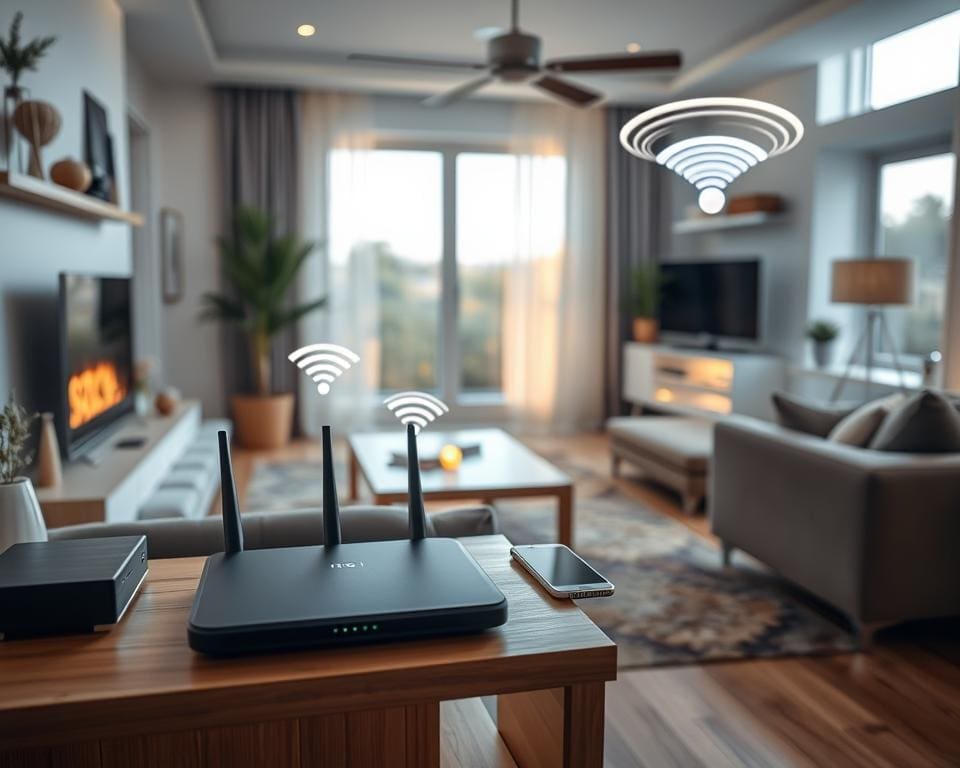In today’s digital age, home networking solutions for better Wi-Fi have become indispensable. As our lives increasingly intertwine with technology, the demand for reliable internet connectivity grows. Embracing effective home networking ensures that you can enjoy an enhanced internet experience across multiple devices without interruption. As smart homes become more common, having a robust Wi-Fi system is crucial for achieving seamless connectivity and optimised performance in activities such as streaming, gaming, and remote work.
By leveraging quality products from leading brands like TP-Link, Netgear, and ASUS, users can elevate their connectivity standards and experience improved data speeds and reduced latency. It’s time to explore the world of home networking solutions to transform your online presence and stay connected.
Understanding Home Networking Solutions for Better Wi-Fi
In the digital age, a seamless connection between devices is paramount for both personal and professional activities. Gaining a clear understanding of home networking provides the necessary foundation for creating an efficient and responsive digital environment within the household.
What is Home Networking?
Home networking refers to the configuration that allows multiple devices, such as computers, smartphones, and smart appliances, to connect to one another and access the internet within a domestic setting. This interconnected system grants users the ability to share resources, such as files and printers, while enabling access to services like streaming and gaming. Understanding what is home networking forms the essence of effective home networking solutions for better Wi-Fi.
Importance of a Robust Wi-Fi System
A robust Wi-Fi system serves as the backbone of home networking, ensuring reliable and uninterrupted connectivity across multiple devices. As homes increasingly adapt to smart technologies, a strong Wi-Fi signal becomes essential for smooth operation and efficiency. A reliable network enhances productivity, supports a variety of devices simultaneously, and facilitates seamless digital communication. This capability is vital when it comes to residential network troubleshooting, as identifying and resolving connectivity issues is much easier with a well-configured system.

Essential Components for a Successful Home Wi-Fi Setup
A successful home Wi-Fi setup relies on the right components tailored to user needs. Understanding the main features of each component ensures that homes stay connected, accommodating the demands of modern living. Notably, these components involve choosing the right wireless router, integrating mesh networking solutions, and engaging network optimization services for better performance.
Choosing the Right Wireless Router
Selecting the ideal router serves as the cornerstone of any home Wi-Fi setup. Users should assess factors such as coverage area and speed capabilities while considering compatibility with existing devices. Renowned brands like Linksys, D-Link, and Google Nest provide a range of options that cater to various household requirements. Features such as dual-band support can significantly enhance connectivity in busy homes, ensuring every device connects seamlessly.
Mesh Networking: The Future of Connectivity
Mesh networking represents a revolutionary advancement in maintaining a strong, unified wireless signal throughout larger properties. By using multiple nodes to blanket an area with comprehensive coverage, this technology eliminates dead zones common in traditional routers. Homeowners enjoy fast Internet access, allowing for streaming, gaming, and remote work without interruptions. Investing in this innovative approach unlocks the full potential of home connectivity.
Installing Network Optimization Services
The implementation of network optimization services is vital for improving overall performance. These services often involve a thorough analysis of the home Wi-Fi setup to enhance speed and reliability. Users benefit from Wi-Fi signal boosting techniques as well as configuration adjustments designed to maximise the effectiveness of their router. This ensures all devices maintain a strong connection, regardless of their location within the home.
Practical Tips for Improving Home Internet Connectivity
To improve home internet connectivity, consider the placement of your wireless router. Positioning it in a central location within your home can significantly enhance signal strength and coverage, ensuring you have a stable connection throughout your space. Avoid placing the router near walls or large obstructions, as these can weaken signals and create dead zones in your network.
Regularly updating your router’s firmware is another crucial step for network performance enhancement. Most routers have settings that allow for automatic updates, keeping your system secure and optimised. Additionally, if your home has multiple floors or rooms, exploring options for wireless network installation, such as adding range extenders or a mesh network, may provide the robust coverage needed for seamless connectivity.
Lastly, empowering yourself with the basics of residential network troubleshooting is invaluable. Familiarise yourself with common connectivity issues, such as rebooting your router or checking for interference from other electronic devices. Such knowledge will enable you to swiftly resolve problems, leading to a more satisfying online experience and a reliable, efficient home network.









